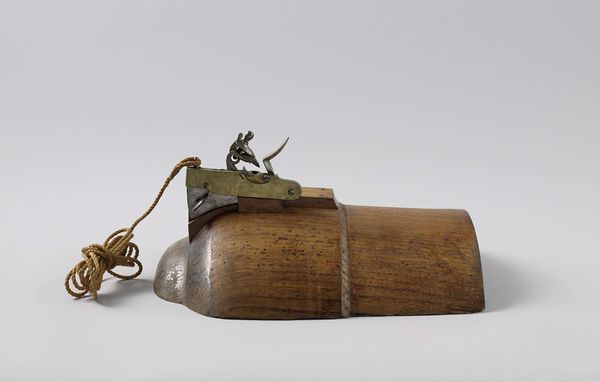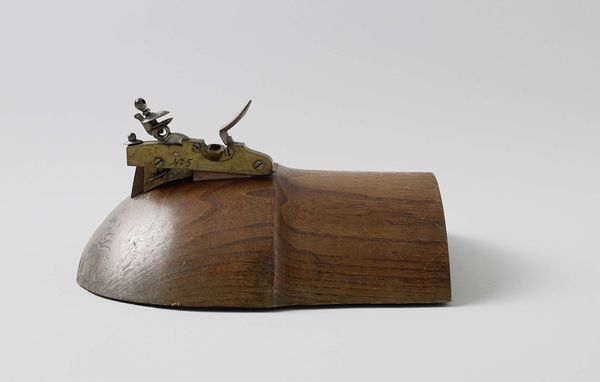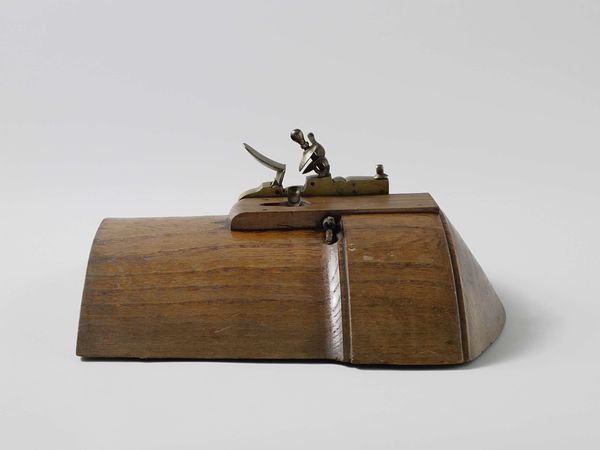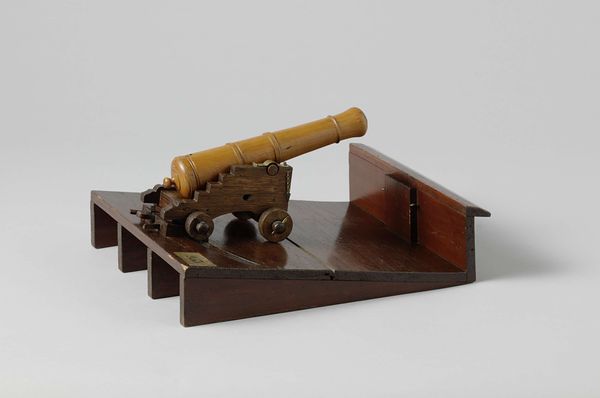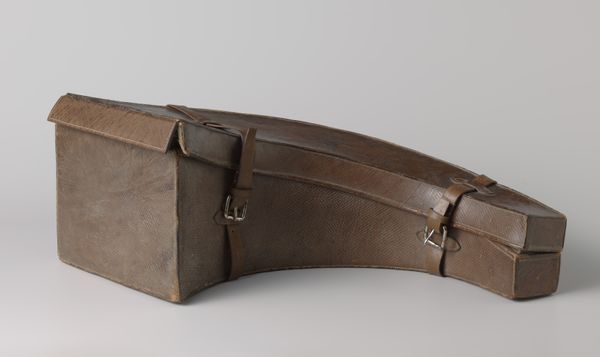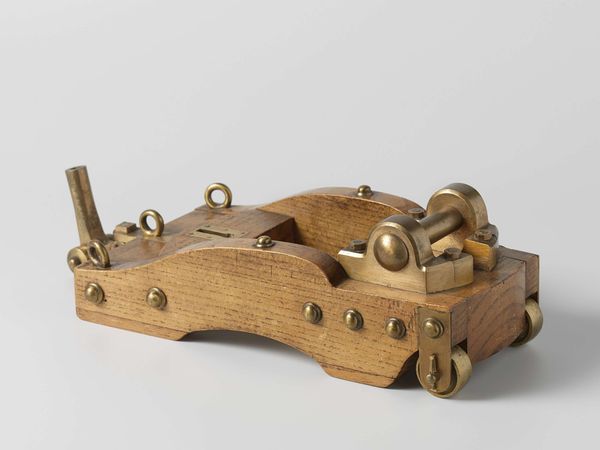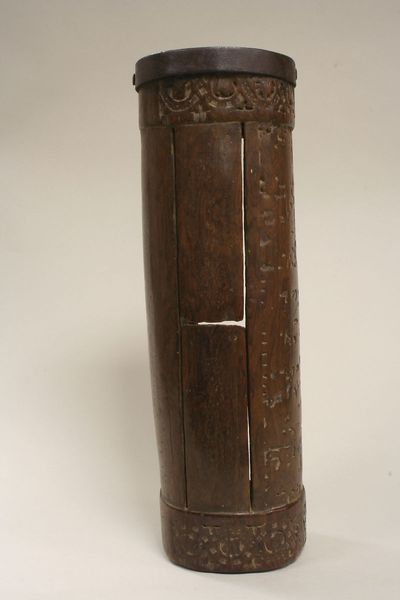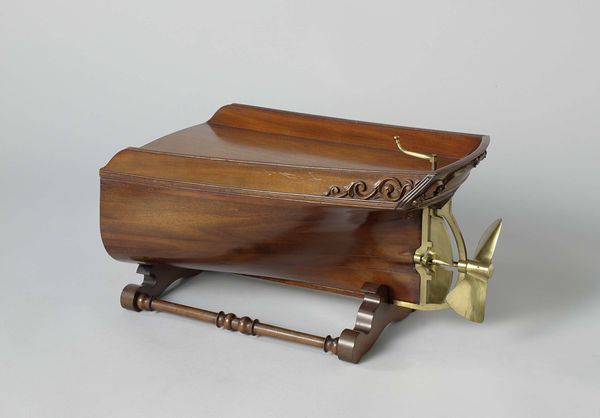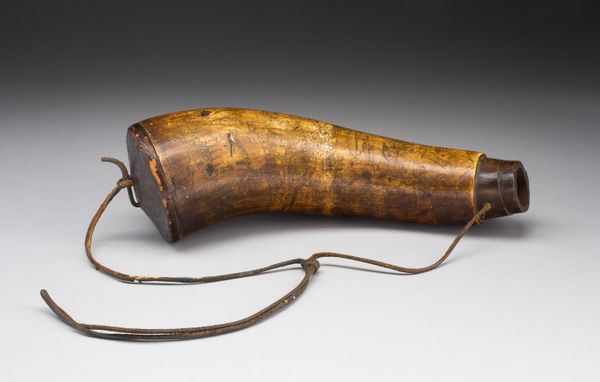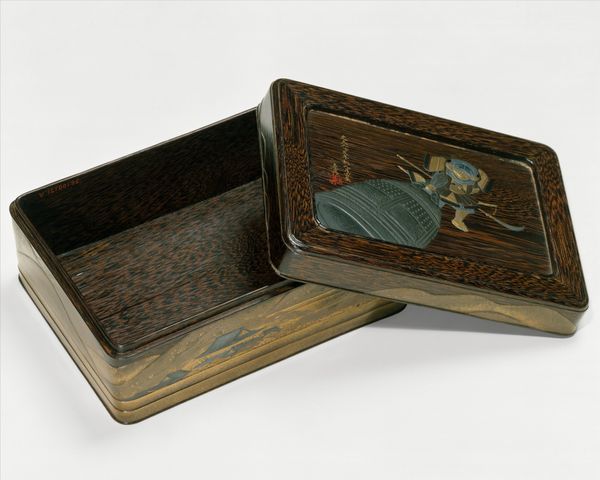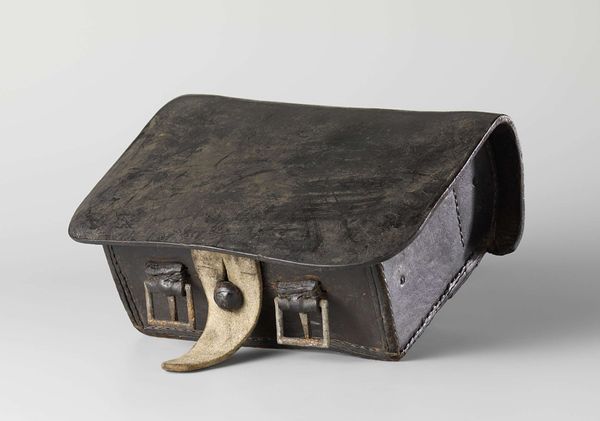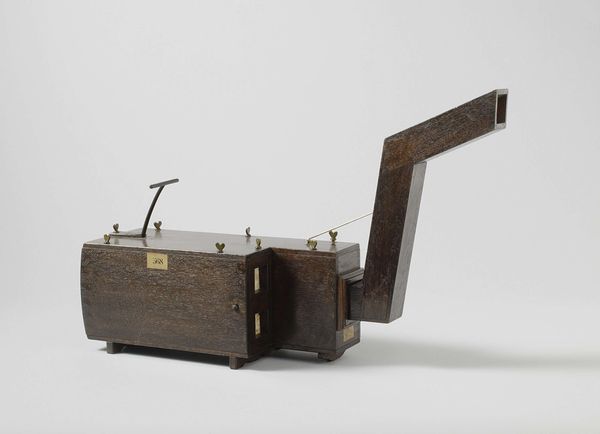
Flint gunlock for a 12-pounder cannon on a wooden breech c. 1801s - 1811s
carving, metal, wood
carving
metal
sculpture
wood
Dimensions: height 22.3 cm, width 49 cm, depth 40.2 cm
Copyright: Rijks Museum: Open Domain
This is a flint gunlock for a 12-pounder cannon on a wooden breech, likely made in Vlissingen. The initial visual impact comes from the contrast between the solid, weighty wooden structure and the intricate metal mechanism affixed to it. The wood, predominantly brown, presents a study in texture through its visible grain. The metal components, though smaller in scale, command attention with their complex, almost baroque arrangement of levers, screws, and a small chain. It invites a semiotic reading, where the cannon embodies power and force, contrasted against the intricate mechanisms—symbols of human ingenuity, control, and precision. The artist has played with a juxtaposition between the static and the dynamic, the brute force of the cannon, and the refined design of the firing mechanism. This highlights how acts of war are mediated through sophisticated systems, and the tension between abstract destructive power and concrete acts of engineering.
Comments
Cannon were traditionally fired using a lighted fuse, a method that always entailed a certain delay. Replacing the fuse with a flintlock enabled the cannon to fire imme-diately. From 1810, the Dutch Navy introduced flintlock mechanisms on cannon, known as gunlocks. The wooden dummy (the breech) was intended to show the gunmaker the exact position of the flintlock.
Join the conversation
Join millions of artists and users on Artera today and experience the ultimate creative platform.
